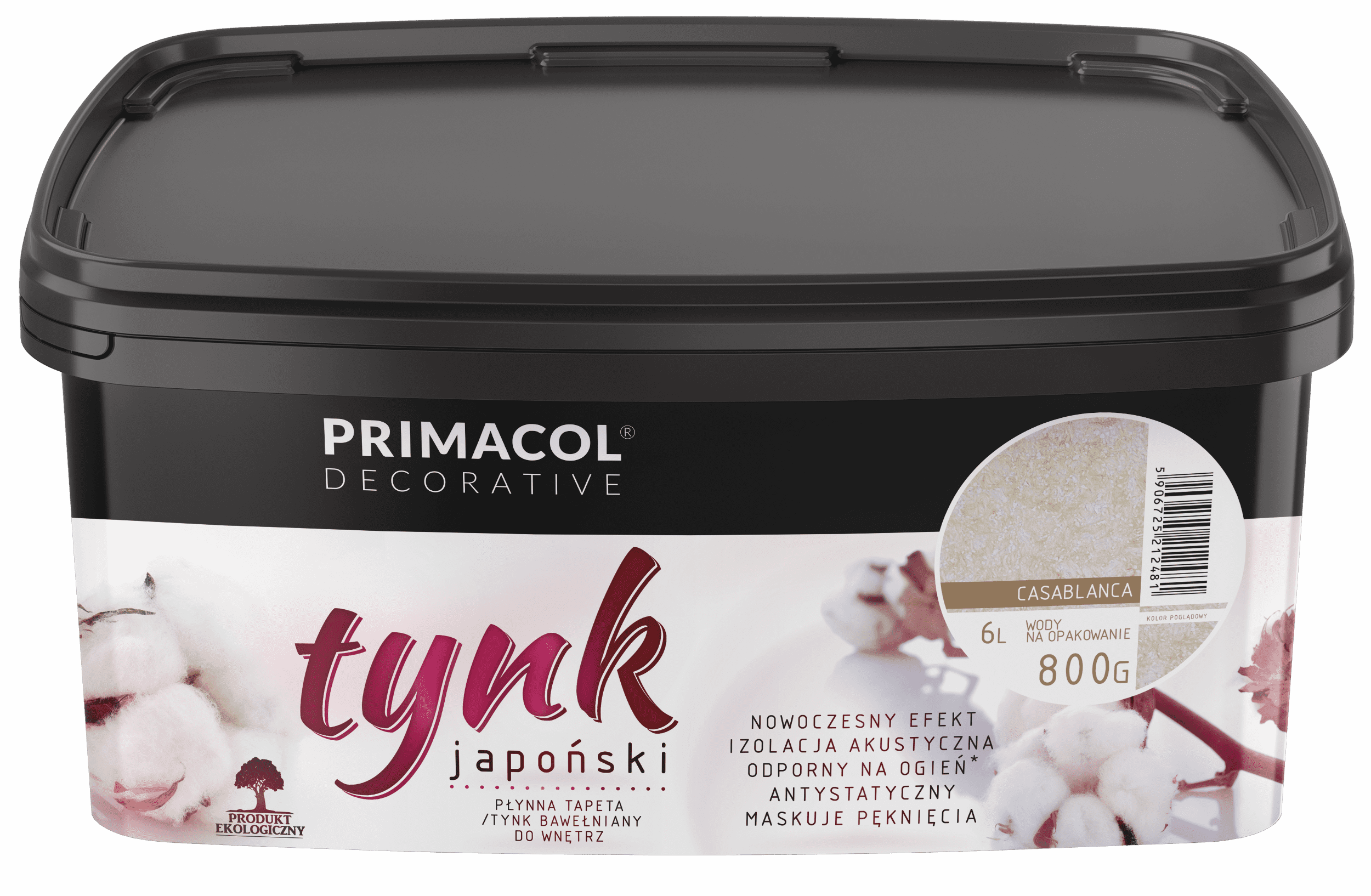The Japanese plaster is intended for the decoration of interior walls. It allows creating a sophisticated and elegant decorative coating with an explicit structure. The product is fire-resistant*. It eliminates wall imperfections as well as improves acoustic and thermal insulation. It gives a unique climate to flats, offices, conference rooms, restaurants, etc. The Japanese plaster is an environmentally friendly and easy to use product. It is manufactured in a wide range of colours.
Japanese plaster
Description
Substrate preparation: The surface should be clean, dry, stable and uniform. Prior to application of the Japanese plaster, prepare the surface carefully. Old wallpaper or the wallpaper that improperly adheres to the paint substrate must be removed, washed off with water with an additive of cleaning agents, rinsed and dried. Old, but still undamaged, surface covered with an oil paint must be carefully faded, washed and dried prior to application. Fresh plaster should be seasoned for at least 4 weeks.
The prepared surface must be primed using a special priming agent for the Japanese plaster and painted with an emulsion paint to a colour similar to the dominant colour of the Japanese plaster. Imperfections due to improper treatment of the surface may cause stains on the Japanese plaster once applied. Using a primer other than the recommended one (priming agent for the Japanese plaster) and other tools (Japanese plaster roller) may result in rejection of a complaint, if any. Do not use the plaster as a compound for hiding surface imperfections, such as fungi or damp patches, as dye penetration may occur.
Plaster preparation: The Japanese plaster must be mixed each single time to obtain an amount sufficient for the entire wall. If you purchase several containers, always mix them together. In order to maintain the colour, use products from the same production batch. This is a natural product and individual batches may differ in the shade of colour. Calculate the required amount of the compound to make sure the entire surface to be decorated can be covered.
Taking breaks during plaster application on the same surface may cause stains in the spot of joint of surfaces applied at various times
- Add ¾ water of the amount calculated for the entire surface to the container.
- Add the product to water gradually. Do not add the entire packaging contents at a time.
- Mix manually by stirring and shaking the product with your fingers. The compound should be malleable, without dry lumps, and thick. Once picked up with your hand and turned upside down, it should fall down after about 1 second. If the compound is too thick, gradually add the remaining water until the right consistency is obtained.
- Prior to use, leave the compound for one hour and stir again.
- Once mixed with water, the wallpaper remains suitable for use for 12 hours. Store the wallpaper in the closed packaging.
Application method: The prepared compound can be applied on the wall with a hand or plastic spatula in small amounts and spread with a Japanese plaster roller. The obtained layer should be about 1 to 2 mm thick. If too much compound sticks to the roller, rinse it under warm water, wipe off the excessive amount and continue. Once spread, smoothen the plaster using a finish trowel. The plaster becomes completely dry within 24 to 48 h. Due to the likelihood of runs occurring on walls, it is recommended to speed up the drying process by increasing the room temperature. Do not use devices emitting heat locally, such as blowers and radiant heaters.
Important! The Japanese plaster is not recommended for damp rooms (kitchen, bathroom). Avoid places where the plaster would be directly exposed to water. In places where high humidity is likely, protect the dried plaster using the PRIMACOL® DECORATIVE varnish to prevent water absorption. Important! Always make a test prior to use. Coverage per container depends on the method of application, the surface and the colour used.
Maintenance: The Japanese plaster is an antistatic product. If patches occur, spray them with a cold soap solution, wait 10 minutes and gently wipe off with a dry soft cloth. If dust sets on the plaster after some time, remove it using a vacuum cleaner. In order to change the natural colour of the plaster, it can be covered with emulsion paint in any colour. It does not affect plaster texture.
Plaster removal: The plaster is easy to remove. If necessary, soak well the walls with warm water, wait two hours and scrape it off.
Storage: Store in the tight closed containers at an above-zero temperature in dry and airy rooms.
Additional information
| Coverage | approx. 4 m²/l (depending on the precision of application) |
|---|---|
| Proper drying | 24 – 48 h |
| Tool cleaning | warm water |
| Other | antistatic, sound insulation, masks cracks, modern effect |
Colour card

The colours shown on the colour card are indicative and may differ from the actual ones.




